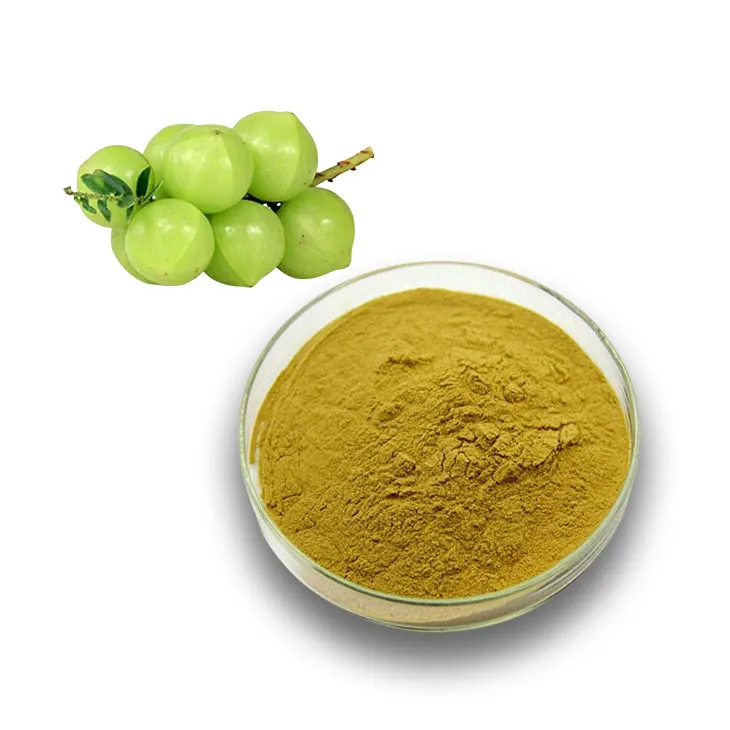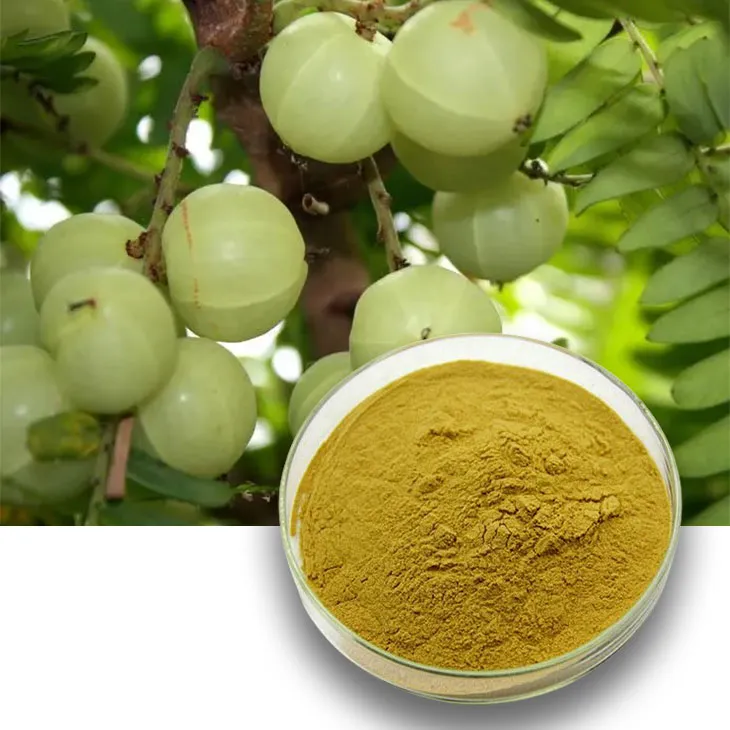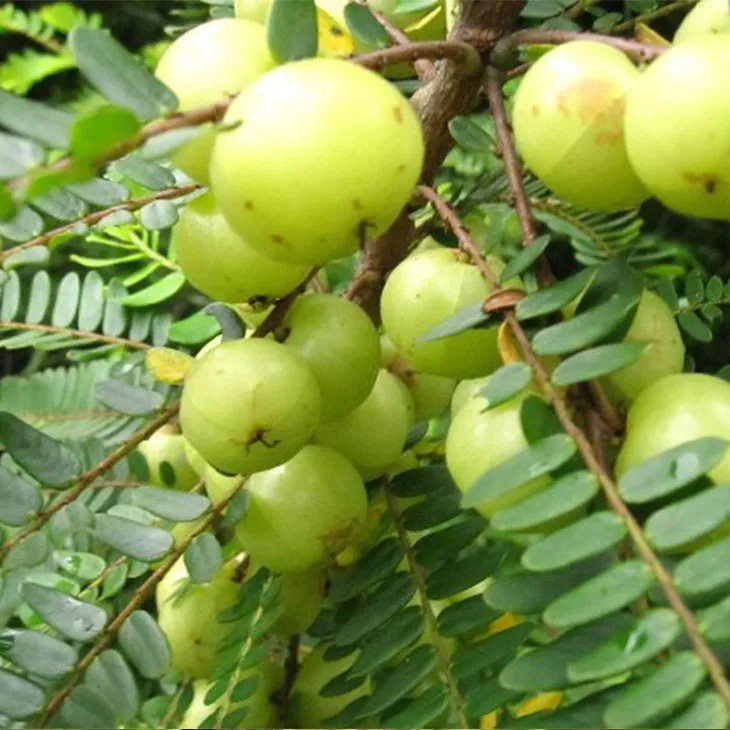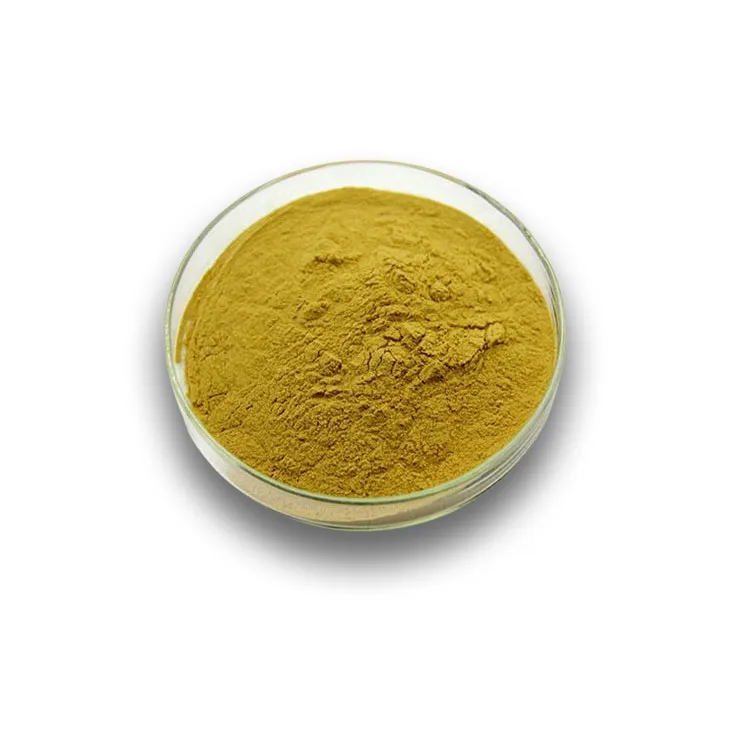- 0086-571-85302990
- sales@greenskybio.com
Phyllanthus emblica extract: uses, advantages, and manufacturing processes.
2024-11-12

1. Introduction
Phyllanthus emblica, also known as Indian gooseberry, has been recognized for its various properties for centuries. Its extract has become a significant natural resource in different industries. This article will explore the uses, advantages, and manufacturing processes of Phyllanthus Emblica Extract.

2. Uses
2.1 Medicinal Applications
Traditional Ayurvedic Medicine: Phyllanthus Emblica Extract has a long history in traditional Ayurvedic medicine. It has been used to treat a wide range of ailments. For example, it was often prescribed for digestive problems, respiratory disorders, and skin diseases.
Diabetes Management: In modern research, the extract has shown potential in diabetes management. It can play a role in regulating blood sugar levels by enhancing insulin sensitivity. This is crucial for diabetic patients as it helps in maintaining stable blood glucose levels.
Hepatoprotective Properties: Another important medicinal use is its hepatoprotective nature. The liver is constantly exposed to various toxins, drugs, and can be affected by diseases. The extract can protect the liver from such damage. It helps in maintaining the normal functioning of the liver cells and can even assist in the regeneration of damaged liver tissue.
2.2 Cosmetic and Beauty
Anti - aging in Skin Care: In the beauty industry, Phyllanthus Emblica Extract is a popular ingredient in anti - aging products. The skin ages due to various factors, including the breakdown of collagen and elastin. The antioxidant - rich extract inhibits this breakdown, thereby preventing premature aging of the skin. It helps in reducing wrinkles, fine lines, and maintaining the skin's elasticity.
Hair Health: It is also used in hair care products. When added to hair masks and shampoos, it improves the overall health of the hair. It can nourish the hair from the root to the tip, making it stronger, shinier, and more manageable.
2.3 Food and Beverage
Traditional Drinks: In some cultures, Phyllanthus emblica extract is used to make traditional drinks. These drinks are not only refreshing but also have health - promoting properties. For example, they may boost the immune system, improve digestion, or provide energy.
Nutritional Enhancement: When added to food and beverages, the extract enhances their nutritional value. It contains essential vitamins, such as vitamin C, minerals, and other bioactive components. This makes the products more beneficial for consumers.

3. Advantages
3.1 Rich in Nutrients
Phyllanthus emblica extract is a nutrient - rich substance. Vitamin C: It is a significant source of vitamin C, which is well - known for its antioxidant properties. Vitamin C helps in protecting the body against free radicals, which can cause cell damage.
Tannins and Flavonoids: Besides vitamin C, it also contains tannins and flavonoids. These phytochemicals work together with other nutrients in a synergistic manner to provide various health benefits. For example, tannins have anti - inflammatory properties, and flavonoids can improve blood circulation.
3.2 Eco - Friendly
Cultivation: The cultivation of Phyllanthus emblica is relatively environmentally friendly. Compared to some other crops, it requires less water. This is important in regions where water resources are scarce.
Pesticide Use: It also needs fewer pesticides. This not only reduces the environmental impact but also makes the final product, the extract, more natural and free from pesticide residues.
3.3 Compatibility
Phyllanthus emblica extract can be easily combined with other natural ingredients. This is very useful in different formulations. For example, in cosmetic products, it can be combined with other plant extracts, oils, and vitamins to create effective and multi - functional products. In food and beverage formulations, it can blend well with other flavors and nutrients.

4. Manufacturing Processes
4.1 Preparation of Raw Material
Fruit Washing: The first step in the manufacturing process is the preparation of the raw material, which is the Phyllanthus emblica fruits. These fruits are thoroughly washed to remove dirt, debris, and any impurities.
Drying or Fresh Use: After washing, the fruits can be either dried or used fresh, depending on the extraction method. Drying the fruits can make them easier to store and transport, while using fresh fruits may be preferred in some extraction methods for better extraction efficiency.
4.2 Extraction Techniques
Maceration: One of the traditional extraction methods is maceration. In this method, the plant material (either dried or fresh Phyllanthus emblica fruits) is soaked in a solvent for a period of time. The solvent penetrates the plant material and extracts the desired compounds. This is a simple and cost - effective method, especially suitable for small - scale productions.
Percolation: Another traditional method is percolation. In percolation, a solvent is slowly passed through the plant material. This method allows for a more controlled extraction process compared to maceration. It can also be used in small - scale productions.
Advanced Techniques: In large - scale manufacturing, more advanced techniques are often employed. One such technique is microwave - assisted extraction. This method uses microwave energy to speed up the extraction process while maintaining the quality of the extract. It can significantly reduce the extraction time compared to traditional methods.
4.3 Post - Extraction Treatment
Filtration: After the extraction process, the extract is filtered. Filtration is necessary to remove large particles, such as pieces of plant material or undissolved substances. This step helps in obtaining a cleaner and more pure extract.
Evaporation: The filtered extract may then be subjected to evaporation. Evaporation is used to remove excess solvent and adjust the concentration of the extract. This step is crucial for getting the final product with the desired properties.
4.4 Packaging and Storage
Packaging: The final extract is packaged in suitable containers. The choice of container depends on the nature of the extract and its intended use. For example, for cosmetic extracts, it may be packaged in dark - colored, airtight bottles to protect it from light and air.
Storage Conditions: The packaged extract is stored in a cool, dry place away from sunlight. These storage conditions are important to prevent the degradation of the active compounds in the extract. By maintaining proper storage, the quality and effectiveness of the extract can be preserved for a longer period.

5. Conclusion
Phyllanthus emblica extract has a wide range of uses, numerous advantages, and a well - defined manufacturing process. Its applications in medicine, cosmetics, and food and beverage industries make it a valuable natural resource. The nutrient - rich nature, eco - friendly cultivation, and compatibility with other ingredients further enhance its value. The manufacturing process, from raw material preparation to packaging and storage, ensures the production of a high - quality extract. As research continues, it is expected that more uses and benefits of Phyllanthus emblica extract will be discovered.
FAQ:
What are the main medicinal uses of Phyllanthus emblica extract?
Phyllanthus emblica extract has several medicinal uses. In traditional Ayurvedic medicine, it has been used to treat various ailments. Modern research indicates its potential in diabetes management as it may help regulate blood sugar levels by enhancing insulin sensitivity. It also has hepatoprotective properties, protecting the liver from damage caused by toxins, drugs, or diseases.
How is Phyllanthus emblica extract used in the cosmetic industry?
In the cosmetic industry, the Phyllanthus emblica extract is a popular ingredient in anti - aging products. Its antioxidant - rich nature helps prevent premature skin aging by inhibiting the breakdown of collagen and elastin. It is also used in hair masks and shampoos to improve the overall health of the hair from root to tip.
What are the advantages of using Phyllanthus emblica extract in food and beverages?
The extract can be added to food and beverages. In some cultures, it is used to make traditional drinks with health - promoting properties. It can enhance the nutritional value of products because it contains essential vitamins, minerals, and other bioactive components.
What nutrients are present in Phyllanthus emblica extract?
Phyllanthus emblica extract is rich in nutrients. Besides being high in vitamin C, it also contains tannins, flavonoids, and other phytochemicals. These nutrients work together synergistically to offer various health benefits.
What are the common manufacturing processes for Phyllanthus emblica extract?
The manufacturing process of Phyllanthus emblica extract involves several steps. First, the fruits are thoroughly washed to remove dirt and debris, and can be dried or used fresh depending on the extraction method. Extraction techniques include maceration (soaking the plant material in a solvent) and percolation (slow passage of a solvent through the plant material), with microwave - assisted extraction used in large - scale manufacturing. After extraction, the extract is filtered to remove large particles, then evaporated to remove excess solvent and adjust the concentration. Finally, it is packaged in suitable containers and stored in a cool, dry place away from sunlight.
Related literature
- Phyllanthus emblica: A Review of Its Ethnobotany, Phytochemistry, and Pharmacology"
- "Antioxidant and Hepatoprotective Activity of Phyllanthus emblica Extract"
- "The Cosmetic Potential of Phyllanthus emblica: A Natural Source of Anti - aging Compounds"
- ▶ Hesperidin
- ▶ citrus bioflavonoids
- ▶ plant extract
- ▶ lycopene
- ▶ Diosmin
- ▶ Grape seed extract
- ▶ Sea buckthorn Juice Powder
- ▶ Beetroot powder
- ▶ Hops Extract
- ▶ Artichoke Extract
- ▶ Reishi mushroom extract
- ▶ Astaxanthin
- ▶ Green Tea Extract
- ▶ Curcumin Extract
- ▶ Horse Chestnut Extract
- ▶ Other Problems
- ▶ Boswellia Serrata Extract
- ▶ Resveratrol Extract
- ▶ Marigold Extract
- ▶ Grape Leaf Extract
- ▶ blog3
- ▶ Aminolevulinic acid
- ▶ Cranberry Extract
- ▶ Red Yeast Rice
- ▶ Red Wine Extract
-
Panax Ginseng Leaf Extract
2024-11-12
-
Tormentil Extract
2024-11-12
-
Fenugreek Extract Powder
2024-11-12
-
Red Date Extract
2024-11-12
-
Eyebright Extract
2024-11-12
-
Natural grape seed extract
2024-11-12
-
Red Vine Extract
2024-11-12
-
Avocado Extract Powder
2024-11-12
-
Curcuma Longa Extract/Turmeric extract
2024-11-12
-
Golden Seal Extract
2024-11-12





















